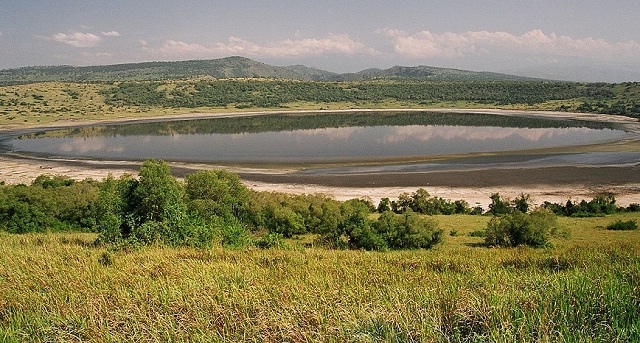
There are many human settlements within the park boundary. Some are legally established; including Hamukungu, Kasenyi, Katunguru, and Katwe-Kabatoro. But many are illegal havens of animal poachers.
An April 2017 report on community-based crime prevention in the park noted that in villages adjacent to the boundaries of Queen Elizabeth National Park, over 40% of households are estimated to have hunted in the park for commercial purposes at least once in 2015. Such activity was not as a major threat to recovery of big mammals in the park.
On the other hand, although residents of legal settlements are mainly engaged in fishing and salt trade, they also keep domestic animals like cattle, sheep, goats, cats and dogs, and grow crops which are threatened by attacks from wild animals. Ziwa Ranch, one of the top farms in the country located in Kimengo sub-county in Masindi District often loses cattle to wild animals.
Queen Elizabeth National Park boasts three main water bodies; Lake George, Lake Edward and the Kazinga channel which connects them. The lakes have six landing sites between them; Hamukungu, Kahendero, Katunguru, and Kasenyi on Lake George and Katwe-Kabatoro and Kayanja are on the Ugandan side of Lake Edward which straddles the DR Congo.
Over 20,000 people are said to depend on the fishing activity from Lake George and the Kazinga channel and another estimated 15,000 depend on the Ugandan side of Lake Edward.
Lion and man tension
The International Union for Conservation of Nature (IUCN) lists the African lion as vulnerable rather than endangered; meaning they are yet to be threatened with extinction.
According to a study published in the journal `Proceedings of the National Academy of Sciences’ in 2015, Africa has about 20,000 lions but the population is declining fast. The scientists from Oxford University said there is a 67% likelihood that the number of lions in Central and West Africa would drop by half within two decades. In East Africa where some populations like the lions in Serengeti National Park, have remained stable, the probability is 37%.
In Uganda, according to a study published in the `Journal of East African Natural History’ titled “Home ranges of Ishasha lions: size and location in relation to habitat and prey availability,” the home range of lions in Ishasha in Kanungu District, which is in QENP are quite small when compared to other parks. The lions in QENP have between 35 and 43 square kilometers to roam, compared to the 400 square kilometres that lions in places such as Serengeti National Park in Tanzania have.
 The Independent Uganda: You get the Truth we Pay the Price
The Independent Uganda: You get the Truth we Pay the Price



If UWA could compensate every damage within 6 days, there could be no conflict between man and beast. The UWA wants to eat a cake and still have it. All revenue from tourism in the park should be used to maintain the park and to pay for damages done by wildlife. Failure to pay for losses incurred means the farmer is left with no other option except to revenge.
In conclusion, these cats were killed by government.